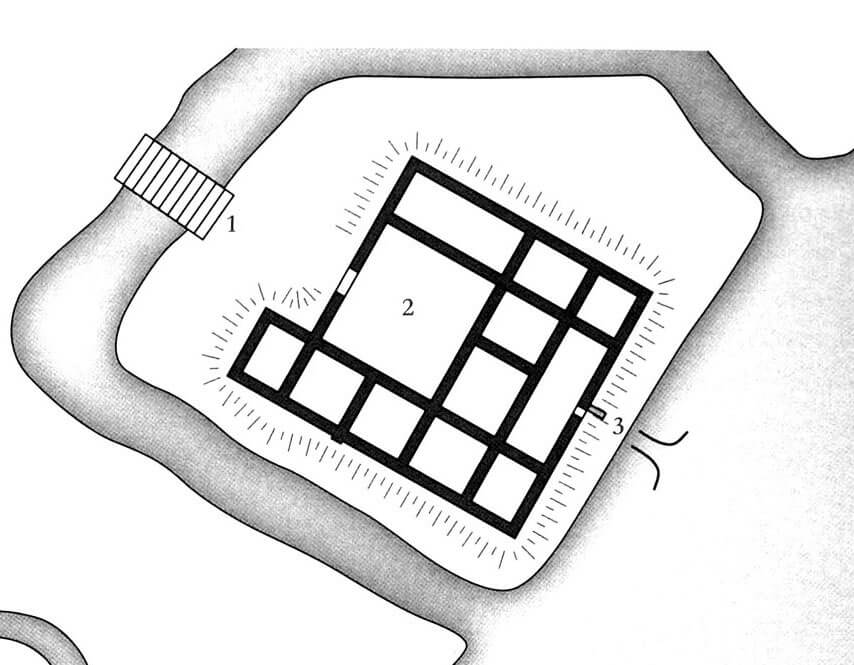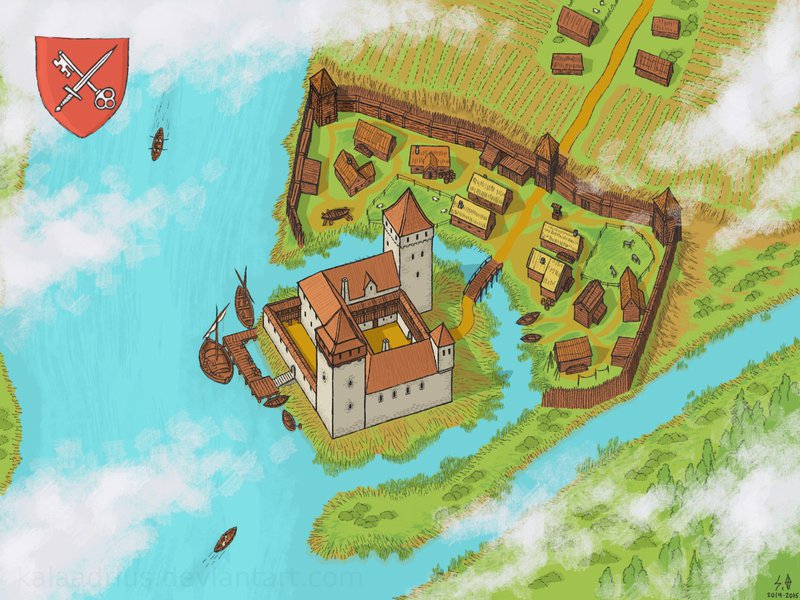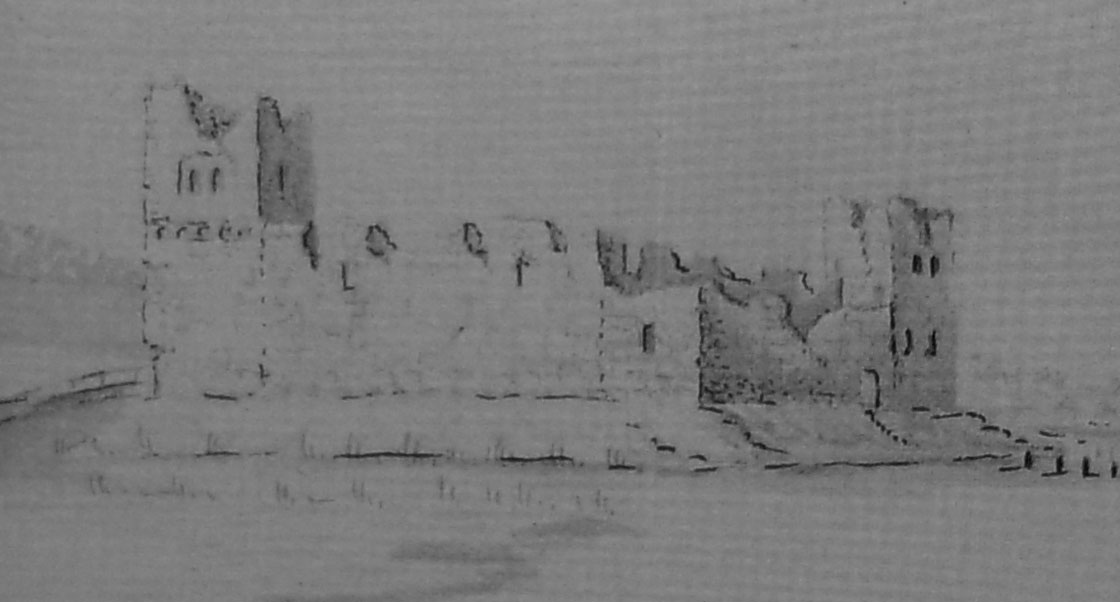History
The first information about the castle comes from 1342. It was established to protect merchants and travelers going by the river and to collect tolls. It was an average rank, roadside, watchtower stronghold, with difficult to estimate military significance. With time, its role was taken over by the nearby Uue Kastre castle. During the Livonian War in the second half of the sixteenth century, in the face of the coming troops of Ivan the Terrible, the castle crew fled. After the war, the castle was probably rebuilt and it operated until the time of the Swedish-Russian conflict in 1656-1661. In the following years it fell into total ruin.
Architecture
The castle was situated right on the southern bank of the Emajõgi River, close to a small stream that flows into it on the west side. This location made it possible to create an irrigated moat, which cut off the site from the south and east. The most important defensive element of the castle was a four-sided tower, to which an external wall was added, obtaining a regular defensive stronghold measuring approximately 28 x 32 meters with a square courtyard. In addition, in the opposite corner there was a second, also four-sided tower. Due to poor condition, the exact arrangement of rooms is not possible to determine.
Current state
To this day, only poorly visible, overgrown foundations of brick and stone have survived from the castle.
bibliography:
Borowski T., Miasta, zamki i klasztory. Inflanty, Warszawa 2010.
Tuulse A., Die Burgen in Estland und Lettland, Dorpat 1942.



